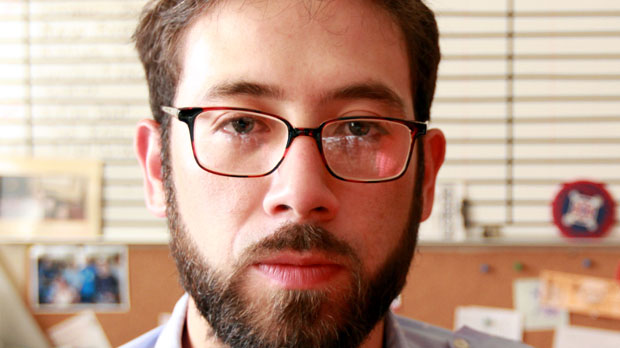Rodrigo Reyes
 Rodrigo Reyes
Rodrigo Reyes

Growing up in Mexico City, Rodrigo Reyes was, in his words, “solidly middle-class.” When he was six, his family moved to the small California town of Merced, and for the first time, he considered his own identity as a Mexican. When the family returned to Mexico, Reyes realized that (as he explained in an email), “There was a part of me that was solidly American and did not fit in back home either.” His films — including 2011’s experimental Memories of the Future and Purgatorio, a Journey Into the Heart of the Border, his latest documentary — are centered around Reyes “trying to sort out my own identity in different ways.”
Purgatorio takes the temperature of the U.S.-Mexico border through individual stories, rather than political talking points, finding migrants, Mexican soldiers and other participants on both sides to give testimony. For Reyes, “Mexico and the United States are in a dysfunctional marriage, like most, only here there is no possibility of divorce. But there is a difference between a dignified struggle and a petty, soul-crushing one.” His goal is “to restart the conversation with a basic exposure to our human nature.”
Reyes had more than a year to get ready for a four-week shoot. “I actually imagined my characters and placed them in a script,” he explained. “All of the interviews in the film were there in some form. Either they were people I had contacted, such as the director of the Pima County Morgue, or I knew I would be looking for them on site, with the help of fixers and friends.”
Knowing it would be a difficult shoot, Reyes recruited Oakland-based cinematographer Justin Chin and sound man José Inerzia, “a Spanish ex-pat living in Tijuana.” Committed to avoiding handheld camera, Reyes set ground rules for the types of static master and dolly shots that could be used. As an example of the difficulty and necessity of maintaining discipline while shooting on the fly, Reyes cites a scene capturing a funeral for murdered police officers. “Everything is composed and it flows together pretty well, but we were scrambling like crazy to capture everything while following our rules,” he notes. “Perhaps in making documentaries, we feel that we are constantly running out of time. But in reality, if you step back, you’ll find that there is indeed enough time to consider and compose.”
After the shoot wrapped, Reyes managed to come up with a 90-minute rough cut in a little more than a month, but it took most of 2012 to get the film into fine-cut shape, with help coming from sources including the IFP Filmmaker Lab and a post-production grant from the Mexican Film Institute (IMCINE). So far Purgatorio has played at the Guadalajara and Los Angeles film festivals, where Reyes says he’s been “amazed and humbled by audience reactions.” While his festival journey continues, Reyes is hanging on to his day job as an interpreter with California’s Merced Superior Court, which he describes as taxing in the moment but with lots of down time he can use to prepare for his films. It’s also “good practice for filmmaking. You meet a wide array of individuals from all walks of life, you are constantly in a unique position to observe them, and you are committed to respecting their story and their right to understand.” Next up is an autobiographical documentary following Reyes’ life juxtaposed with the story of a Mexican migrant convicted for a gang-related murder. -—Vadim Rizov
Photo by Jennifer Duran
